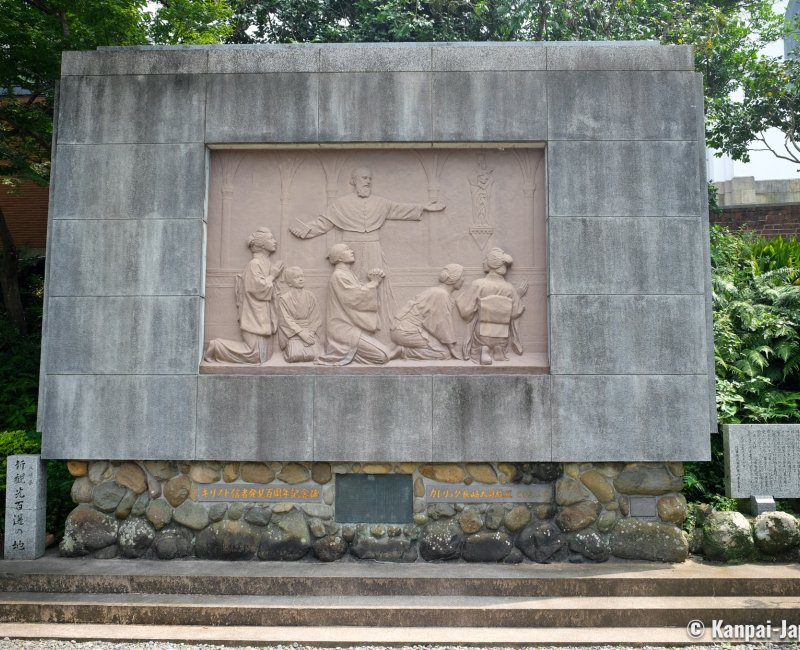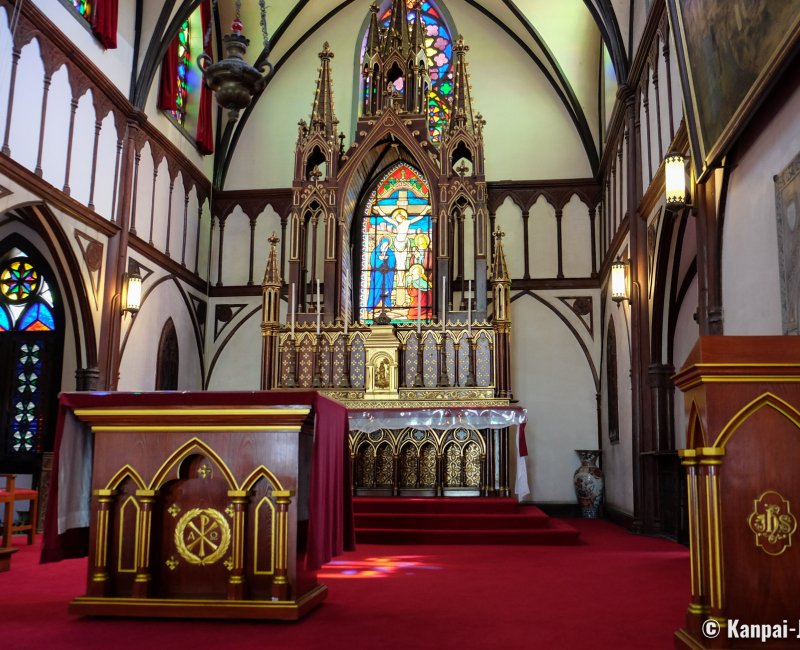Oura Church
⛪ Basilica of the Twenty-Six Holy Martyrs of Japan
Oura Catholic Church is a basilica located near Nagasaki Port, on Kyushu Island. Built in 1864 to the memory of the 26 Holy Martyrs of Japan who died in 1597, the religious construction was damaged by August 9, 1945’s atomic bombing, then restored and enlisted as one of the "Hidden Christian Sites in the Nagasaki Region" in the UNESCO World Heritage in 2018.
The Oura Cathedral in Nagasaki is the oldest Catholic church of Japan. Completed at the end of 1864 and welcoming worshipers since February 1865, it is a testimonial of the 1rst tragedy that befell the area, long before the August 9, 1945 atomic bombing by the Americans at the end of WWII.
Catholic faith has already been repressed by Toyotomi Hideyoshi (1537 – 1598), and was officially and strictly banned under the Tokugawa shogunate (1603 – 1868). Nagasaki, a long-time entry point to Japan for foreign travelers, especially European traders and missionaries of the mid-16th century, was also the place of several violent repression episodes against its Christian community.
Oura Church commemorates the 26 Catholics killed for their faith in 1597 on the Nishizaka Hill, located across the location of the church, which is near the international concession and the port, on a higher ground, not far from Thomas Blake Glover’s property. In 1862, the Catholic institution canonized the victims of the persecution under the appellation "Twenty-Six Holy Martyrs of Japan."

Hidden Christian Sites in the Nagasaki Region
Only a few weeks after its inauguration, on March 17th, 1865, Oura Church was the place where Japanese hidden Christian (kakure kirishitan) of the Urakami Valley confessed their faith to Father Petitjean (1829 – 1884), who had just arrived in Nagasaki coming from the Society of Foreign Missions of Paris (Missions étrangères de Paris), marking another milestone in the history of Christianity in Japan.
Japan reopened to the world and definitely ended its isolationist policy with the Meiji Restoration (1868 - 1889). In 2018, a dozen of hidden Christian sites in the Nagasaki and Kumamoto areas were enlisted in the UNESCO World Heritage, including the Basilica of the Twenty-Six Holy Martyrs of Japan, one of Oura Church’s official names.

Of a Western-style architecture similar to what was built in Europe at the times, the original building was enlarged and heavily restored after Nagasaki’s atomic bombing of August 9, 1945. Admission is paid, and relatively expensive. The inside displays beautiful colored stain-glasses, illuminating the nave, the altar and several statues of major Catholic figures. A Christian museum adjacent to the church is hosted in the former seminary and residence of the archbishop of Nagasaki.
As this is a place of religious recollection, it is highly recommended wearing an appropriate clothing during the visit, that is to say outfits that are not too revealing and that cover the shoulders. Pictures are allowed as long as there is no disturbance to the worshipers’ prayers. Amateurs of churches can also visit the red bricks Urakami Cathedral in Nagasaki, located a little bit north up in the city, not far from the bomb’s hypocenter.

